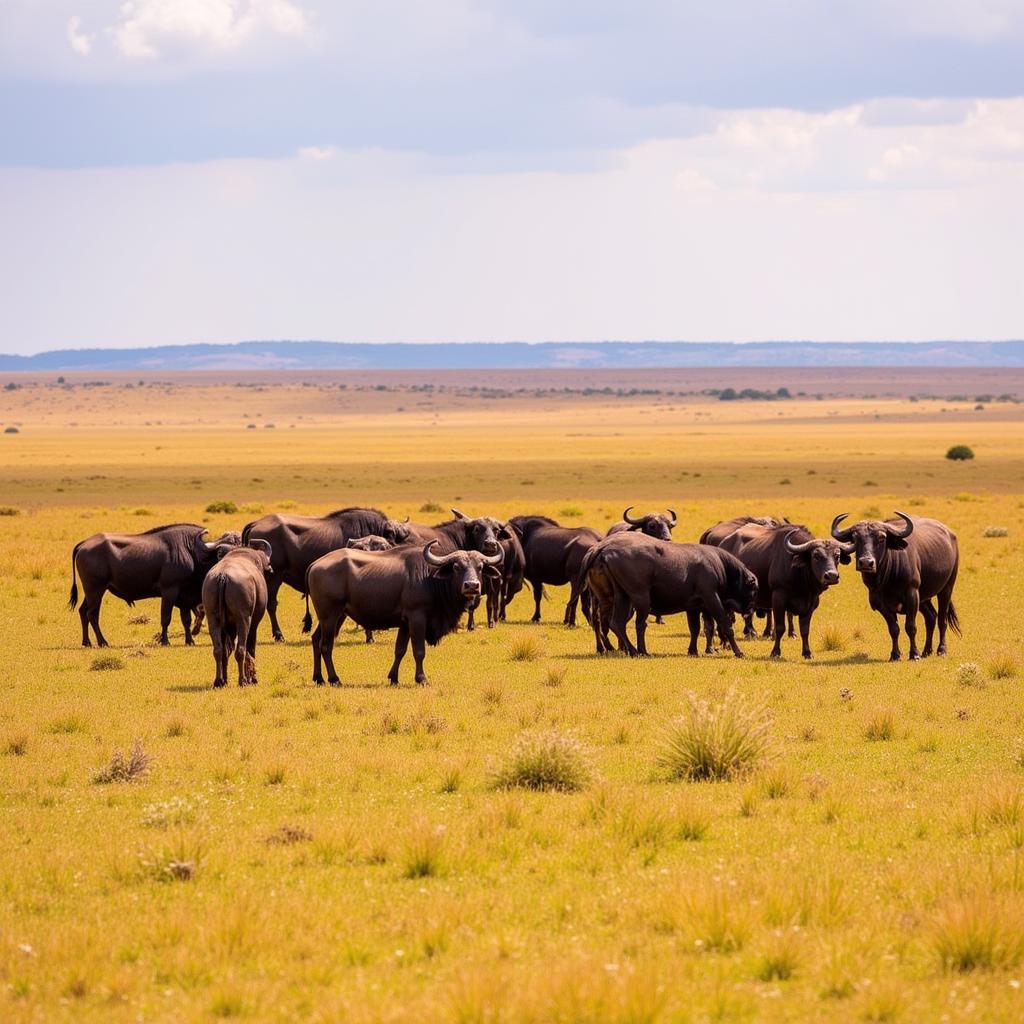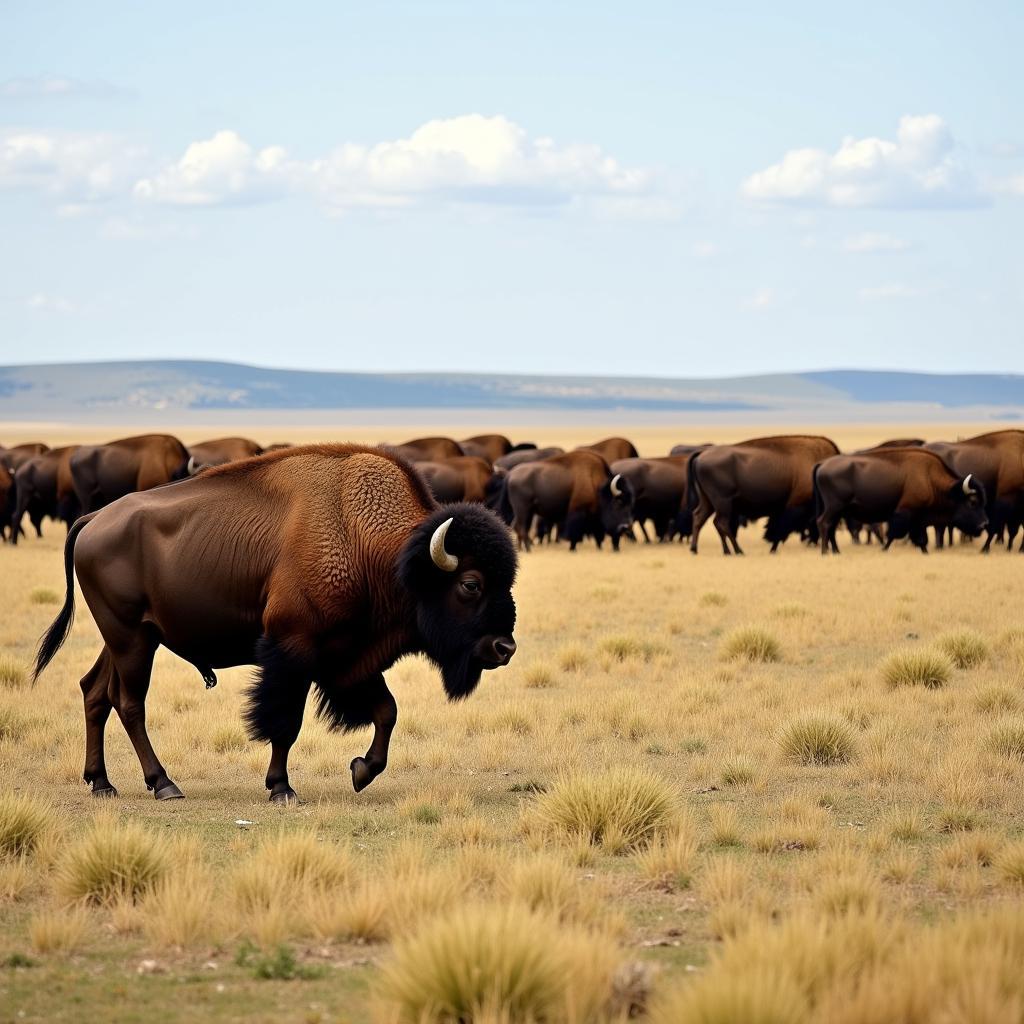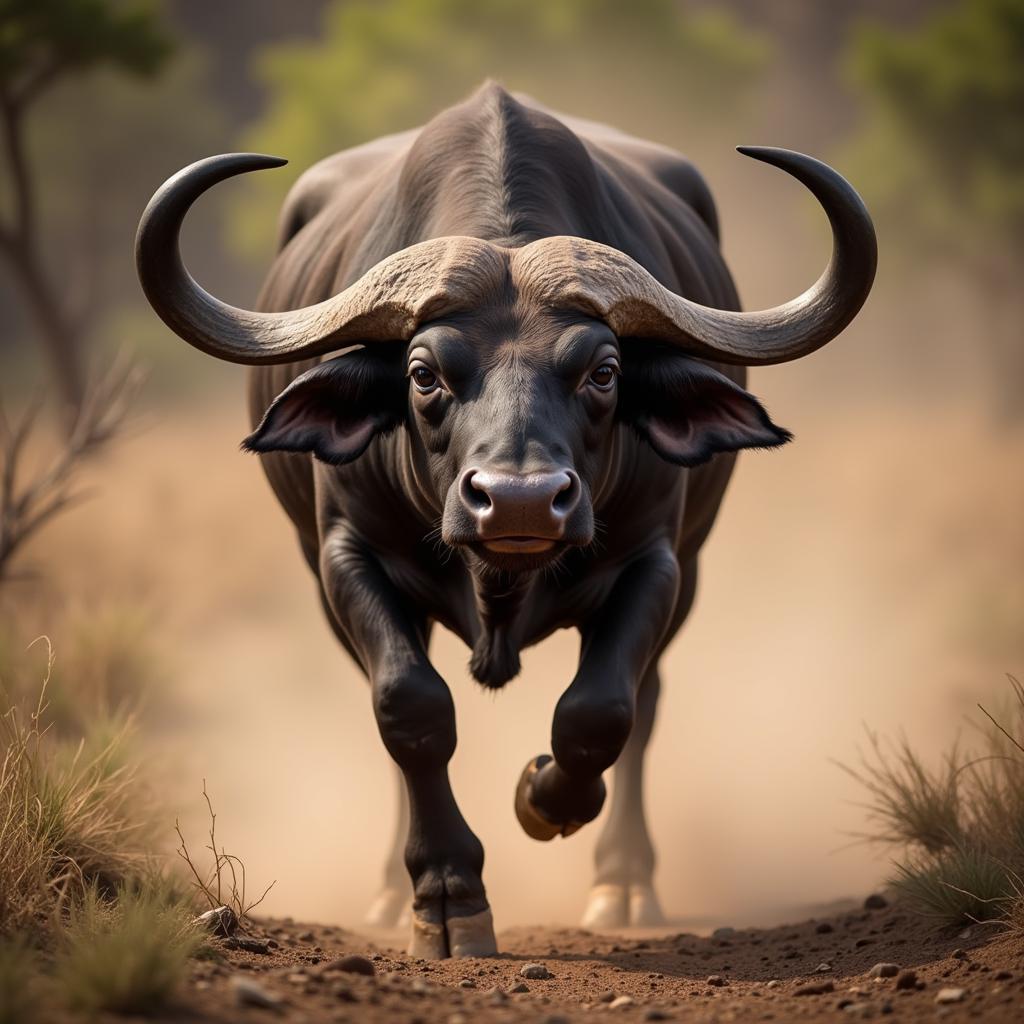African Buffalo vs Bison: Unveiling the Giants
The mighty African buffalo and the American bison, often confused due to their imposing size and horned presence, are distinct creatures. This article delves into the key differences and fascinating similarities between these two bovine behemoths, exploring their habitats, behaviors, and roles in their respective ecosystems. african buffalo vs american bison
Habitat and Distribution: Continents Apart
The African buffalo, as its name suggests, roams the savannas and woodlands of sub-Saharan Africa. They thrive in diverse habitats, from open grasslands to dense forests. In contrast, the American bison primarily inhabits the grasslands and prairies of North America. Historically, their range extended from Alaska to Mexico, though today they are found in more limited areas.
 African Buffalo in Savanna Habitat
African Buffalo in Savanna Habitat
Physical Characteristics: Horns and Humps
Both the African buffalo and the bison possess characteristic horns, but their shapes differ significantly. The African buffalo boasts thick, fused horns that form a solid boss on their forehead, resembling a helmet. The bison, however, has smaller, sharper horns that curve upwards. Another distinguishing feature is the bison’s prominent shoulder hump, absent in the African buffalo. This hump allows them to efficiently graze on grasses, a dietary staple.
Social Behavior: Herd Mentality
Both species exhibit a strong herd mentality. African buffaloes form large, cohesive herds that can number in the hundreds, even thousands. These herds provide protection against predators like lions and crocodiles. Bisons also form herds, though generally smaller than those of African buffaloes. Their social structure is complex, with herds splitting and rejoining based on factors like season and food availability. african buffalo and bison
 Bison Herd Roaming North American Prairie
Bison Herd Roaming North American Prairie
Diet and Ecology: Grazers of Different Lands
Both the African buffalo and the bison are herbivores, primarily grazing on grasses. The African buffalo also browses on leaves and shrubs, while the bison’s diet is more specialized to grasses. Their grazing habits have significant ecological impacts, influencing plant diversity and nutrient cycling in their respective ecosystems.
Conservation Status: Challenges and Successes
While both species have faced threats from habitat loss and hunting, the American bison has experienced a remarkable recovery from near extinction in the 19th century. Conservation efforts have helped restore bison populations, though they still face challenges. African buffalo populations are generally stable, although they are locally threatened in some areas due to disease and habitat destruction. african bison pictures
Are African Buffalo Part of the Big Five?
Yes, the African buffalo is one of the “Big Five” game animals of Africa, a term coined by hunters to refer to the five most difficult and dangerous animals to hunt on foot. The other members of the Big Five include the lion, elephant, rhinoceros, and leopard. This designation highlights the African buffalo’s formidable size, strength, and unpredictable nature. african buffalo the big five
 African Buffalo Charging in Threat Display
African Buffalo Charging in Threat Display
“The African buffalo is not to be underestimated. Their sheer power and aggressive nature make them a force to be reckoned with,” warns Dr. Sarah Jones, a wildlife biologist with over 20 years of experience studying African megafauna.
Conclusion: Two Continents, Two Giants
The African buffalo and the American bison, though often confused, are unique species shaped by their respective environments. Understanding their differences and appreciating their shared characteristics highlights the incredible biodiversity of our planet. Exploring their ecology and conservation status emphasizes the importance of protecting these magnificent creatures and the ecosystems they inhabit.
FAQ
- What is the main difference between an African buffalo and a bison? Their horn shape and the bison’s shoulder hump are key distinguishing features.
- Where do African buffaloes live? They inhabit sub-Saharan Africa.
- Where do bison live? They are found in North America.
- Are African buffalo dangerous? Yes, they are known for their aggressive nature and can be dangerous to humans.
- Are bison endangered? While not endangered, they faced near extinction and are still a conservation concern.
- What do African buffalo and bison eat? They are both herbivores, primarily grazing on grasses.
- Why is the African buffalo called one of the “Big Five”? Due to its dangerous and unpredictable nature, making it a challenging animal to hunt.
Do you want to know more about the thrilling chase of these magnificent beasts? Check out african bison hunting downlad hd.
Need assistance? Contact us 24/7:
Phone: +255768904061
Email: kaka.mag@gmail.com
Address: Mbarali DC Mawindi, Kangaga, Tanzania.
Our customer service team is always ready to help.


